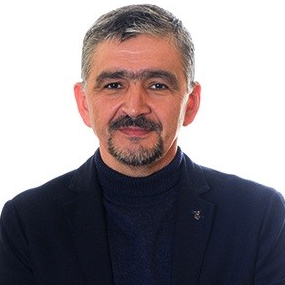Dynamic Modeling and Simulation for Control Systems, 2nd Edition
A special issue of Mathematics (ISSN 2227-7390). This special issue belongs to the section "Engineering Mathematics".
Deadline for manuscript submissions: closed (31 March 2024) | Viewed by 9739
Special Issue Editors
Interests: robotics; dynamic behavior; neural networks; mobile robots; neurorehabilitation
Special Issues, Collections and Topics in MDPI journals
Interests: numerical modeling of machining systems; manufacturing process control; dynamics of cutting processes; chaos theory; computer-assisted design
Interests: mechanical systems; renewable energy systems; virtual prototyping; modeling and simulation
Special Issues, Collections and Topics in MDPI journals
Special Issue Information
Dear Colleagues,
This Special Issue titled, “Dynamic Modeling and Simulation for Control Systems II”, will address topics including the mathematical modeling of dynamic behavior; optimization algorithms; assisted theoretical and experimental research; the control of physical engineering systems; mechanical, electrical and fluid interaction components; system response analysis; feedback control systems; numerical software and software for dynamic simulation and optimization; system stability; and dynamic behavior in the frequency field. This Special Issue aims to cover important aspects about how to optimize the dynamic behavior of physical systems using special algorithms and artificial intelligence in the modeling, simulation and optimization of the components and systems from important fields such as astronautics, aerospace, avionics, robotics, manufacturing systems, mechanical engineering, power energy, materials technology and neurorehabilitation. Fuzzy and neural network control applied in complex systems will be studied. Control and simulation isotope separation processes will be developed and analyzed. This Special Issue of Mathematics will be a useful guide on techniques for the modeling, simulation and optimization of control systems in order to obtain acceptable dynamic behaviors.
Topics for this Special Issue:
- Design of physical engineering systems;
- Control of physical engineering systems;
- Mechanical, electrical and fluid interaction between system components;
- Mathematical modeling of control systems;
- Fuzzy logic and control systems;
- Dynamic behavior analysis;
- System response analysis;
- Feedback control systems;
- Numerical simulation of integrated systems;
- Fault detection and diagnosis;
- Networked control and time-delay systems;
- Frequency response;
- Stability;
- Control and simulation of the isotope separation process;
- Software for dynamic simulation and optimization.
Prof. Dr. Adrian Olaru
Prof. Dr. Gabriel Frumusanu
Prof. Dr. Catalin Alexandru
Guest Editors
Manuscript Submission Information
Manuscripts should be submitted online at www.mdpi.com by registering and logging in to this website. Once you are registered, click here to go to the submission form. Manuscripts can be submitted until the deadline. All submissions that pass pre-check are peer-reviewed. Accepted papers will be published continuously in the journal (as soon as accepted) and will be listed together on the special issue website. Research articles, review articles as well as short communications are invited. For planned papers, a title and short abstract (about 100 words) can be sent to the Editorial Office for announcement on this website.
Submitted manuscripts should not have been published previously, nor be under consideration for publication elsewhere (except conference proceedings papers). All manuscripts are thoroughly refereed through a single-blind peer-review process. A guide for authors and other relevant information for submission of manuscripts is available on the Instructions for Authors page. Mathematics is an international peer-reviewed open access semimonthly journal published by MDPI.
Please visit the Instructions for Authors page before submitting a manuscript. The Article Processing Charge (APC) for publication in this open access journal is 2600 CHF (Swiss Francs). Submitted papers should be well formatted and use good English. Authors may use MDPI's English editing service prior to publication or during author revisions.
Keywords
- mathematical modeling
- numerical simulation
- software simulation
- assisted research
- data acquisition
- mechanical and electrical interaction
- physical engineering design
- control systems
- response analysis
- feedback control
- frequency response
- stability
- fuzzy logic
- neural networks
- artificial intelligence







